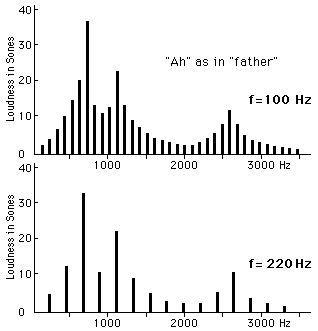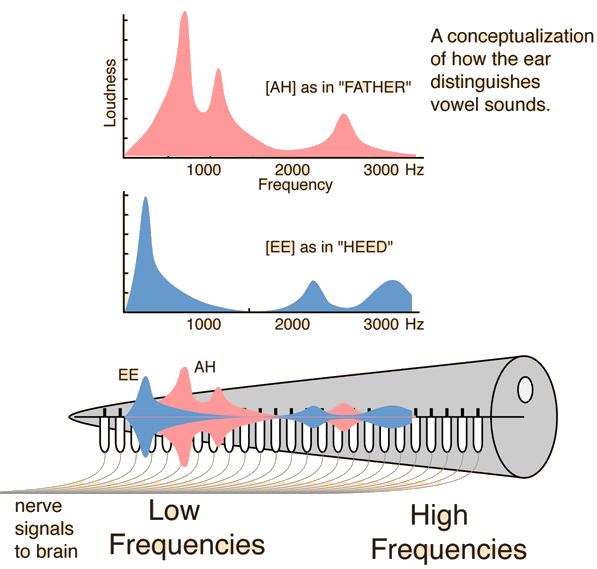Fundamental Frequencies for Speech
A number of studies of fundamental frequencies for speech have been conducted. Such frequencies are different for men and women and change with age. There are also differences between ethnic groups.
An interesting study of the speaking pitch of a group of women over a 48 year time span was made by Russell, Penny and Pemberton. They had high quality recordings from 28 young women between the ages of 18 and 25, made in 1945. They were able to find 15 of them in 1993 and recorded them reading the same passages. They found that the group mean speaking fundamental frequency in 1945 was 229.0 Hz and in 1993 was 181.2 Hz. From Russell, A., Penny, L. and Pemberton, C., Speaking fundamental frequency changes over time in women: A longitudinal study, Journal of Speech and Hearing Research 38, 101-109 (1995)
| Age range | Frequency (Hz) | | 20-29 | 119.5 | | 30-39 | 112.2 | | 40-49 | 107.1 | | 50-59 | 118.4 | | 60-69 | 112.2 | | 70-79 | 132.2 | | 80-89 | 146.3 |
| A study of the speaking frequency of different groups of men of different ages was conducted by Hollien & Shipp. They collected 25 men from each decade of age and asked all of them to read a specified paragraph from the same book. They concluded that there was a lowering of the speaking pitch through early and middle adulthood and then a rising frequency into later life. Hollien, H. and Shipp, T, Speaking fundamental frequency and chronological age in males, Journal of Speech and Hearing Research 15, 155-159 (1972). |
|
Index
Voice concepts
Musical instruments
Reference
Benade
Ch. 19
Stemple, et al. |





